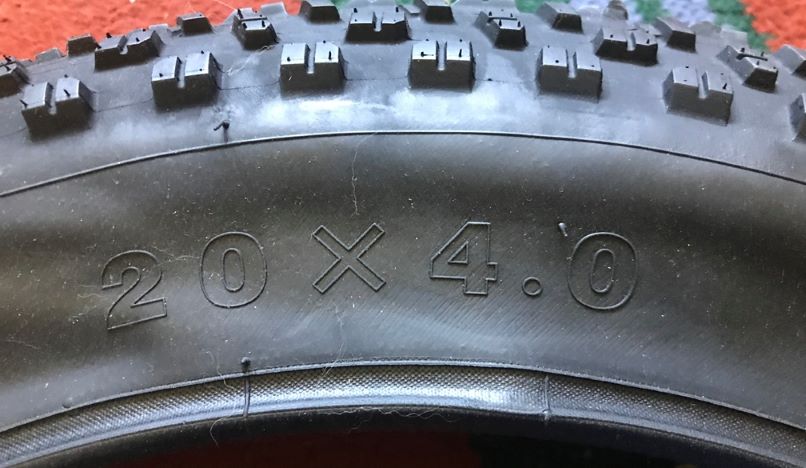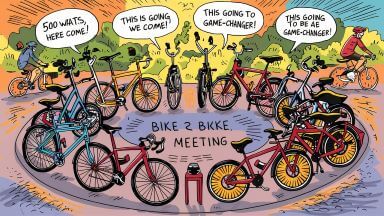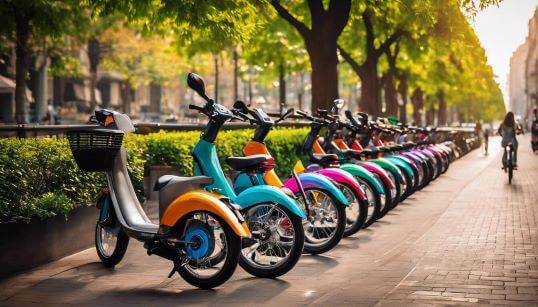Electric bikes, often referred to as e-bikes, are standard bicycles endowed with an electrical motor and an energy-efficient battery to assist in pedalling. They have gained favour amongst users due to their environmental friendliness and financial practicability as alternatives to traditional bikes or cars. Moreover, these electrically powered units come in several forms, catering to diverse needs by offering unique features. It’s surprising yet true that some of these energy-efficient e-bikes might just be the answer to replace cars and reduce carbon footprints substantively. Now let’s delve into the mechanism behind these energy-efficient e-bikes.
An electric bike, or e-bike, is a bicycle equipped with a motor and an energy-efficient battery that assists with pedalling or pedal assist, as it is known in the ebike world. This added power, provided by the energy-efficient mechanism, makes cycling easier, particularly uphill or over long distances, and allows riders to travel further with less effort.

Defining Electric Bicycles
Let’s start by defining what an electric bicycle, or e-bike, actually is. In simple terms, an electric bike is a bicycle equipped with a motor and rechargeable battery to assist your pedalling. Unlike motorcycles or scooters, electric bikes do not operate solely on motor power; instead, the motor provides assistance based on how hard you pedal and the level of support you have selected. This means that you still need to actively pedal to move forward, making it a more intuitive and engaging experience.
To illustrate this concept further, imagine you are cycling up a steep hill. With a regular bicycle, you would need to exert significant effort to reach the top. However, with an electric bike, the motor kicks in as you pedal and provides extra power to make the climb easier. This allows you to maintain a comfortable speed and reduces the strain on your legs.
Now that we have a clear understanding of what defines an energy-efficient electric bike, let’s dive into the mechanics behind how these fascinating machines function.
So essentially, an electric bike enhances your pedalling capabilities rather than replacing them entirely.
Electric bikes are designed to provide various levels of assistance, typically ranging from three to five levels, selected via a controller on the handlebars. Some models even offer a ‘boost’ button for short bursts of additional power when needed. Additionally, many electric bikes come with a walk-assist mode that enables you to push the bike more effortlessly when navigating crowded areas or uphill sections.
Now that we have a clear understanding of what defines an electric bike let’s dive into the mechanics behind how these fascinating machines function.

Some e-bike facts
- An electric bike is a bicycle with an electric motor used to assist the rider.
- The motor is usually integrated into the frame of the bike, and the rider controls the motor some have a throttle on the handlebars not legal in the UK, it can be located in many places on the bike though, behind the seat or in the middle frame of the bike.
- Electric bikes are becoming increasingly popular as they offer a way to travel without getting sweaty, and they’re also environmentally friendly, it is often the choice of transportation for people on their daily commute.
- Most electric bikes range 20 to 40 miles and can reach speeds of up to 15.5 mph, speed can be altered with the level of assistance option chosen from LCD screen.
- Electric bikes are generally more expensive than regular bicycles. Still, they can save you money in the long run as you won’t need to buy a car or public transport, they are a good alternative saving you tax and petrol money.
You can find out why ebikes are so expensive here.
Mechanics of an EBike
The mechanics of an energy-efficient electric bike revolve around its core components: the motor and battery. These essential elements work together seamlessly to assist while riding.
Electric bike motors are usually located either in the middle of the frame (known as mid-drive) or within one of the wheel hubs. Mid-drive motors work through the bike’s chain and gears, allowing for a more efficient transfer of power. On the other hand, hub motors directly power one of the wheels by replacing the traditional hub. Both types have their advantages and considerations, and the choice often depends on personal preferences and riding style.
The motor receives energy from a battery, typically removable and rechargeable. The battery’s capacity determines how far an electric bike can travel on a single charge, referred to as its range. Factors such as terrain, assistance level selected, rider weight, and weather conditions can influence the range. Most electric bikes offer a range between 20 to 80 miles.
To put it simply, think of an electric bike as a trusty sidekick that provides a boost whenever you need it. It’s like having your superhero companion who swoops in with extra strength when faced with challenges like hills or headwinds.
So when you ride an electric bike, engaging the motor is as easy as turning it on, selecting your desired assistance level, and pedalling your way to effortless acceleration and easier maintenance of speed, particularly when encountering uphill terrain or facing strong winds.
Keep in mind that electric bikes are generally heavier than non-electric bicycles due to the added weight of the motor and battery. The weight can range from less than 4kg up to around 6-8kg depending on budget and intended use. However, advances in technology continue to make electric bikes more lightweight and streamlined.
- The mechanics of an electric bike involve the motor and battery working together to provide assistance while riding. Electric bike motors can be located in the middle of the frame (mid-drive) or within one of the wheel hubs, each with its own advantages. The motor is powered by a removable and rechargeable battery, with the capacity determining the bike’s range. Electric bikes offer a range between 20 to 80 miles depending on various factors. Engaging the motor on an electric bike is as simple as turning it on, selecting the desired assistance level, and pedalling. Electric bikes are generally heavier than regular bicycles due to the added weight of the motor and battery, but technological advancements aim to make them more lightweight and streamlined.
Classification of E-Bikes
Electric bikes have evolved over the years to cater to different needs and preferences of riders including those with an eco-conscious mindset. Understanding the various classifications can help you choose the right electric bike suited for your specific requirements. Let’s explore the main types of electric bikes:
- Commuter Electric Bikes: Designed for urban environments, commuter e-bikes prioritise comfort, efficiency, and ease of use. They typically feature a lightweight frame, upright riding position, and integrated accessories like fenders and racks for convenient commuting.
- Mountain Electric Bikes: If your adventures take you off-road and into rugged terrains, mountain e-bikes are built to handle the challenge. These bikes come with durable frames, wide tyres with aggressive tread patterns, and robust suspension systems to absorb shocks on uneven trails.
- Folding Electric Bikes: Ideal for those who need portability and storage convenience, folding e-bikes can be easily folded down for compact storage or transportation. They are perfect for commuters who need to combine cycling with public transport or have limited storage space at home or the office.
- Cargo Electric Bikes: Cargo e-bikes are designed to carry heavy loads, making them a practical choice for hauling groceries, transporting children, or making deliveries. They feature sturdy frames, extended rear racks or front baskets, and often have a powerful motor to handle heavier payloads.
- Step-through Electric Bikes: Step-through e-bikes have a low top tube or no top tube at all, allowing riders to easily mount and dismount the bike without having to swing their leg over a high frame bar. This makes them particularly suitable and comfortable for individuals with mobility issues or those who prefer a more accessible riding experience.
- Cruiser Electric Bikes: Known for their relaxed and comfortable riding style, cruiser e-bikes are perfect for leisurely rides along the beach or through the city. They often feature a laid-back riding position, wide and cushioned saddles, and stylish designs that evoke a nostalgic feel.
- Hybrid Electric Bikes: Hybrid e-bikes combine the features of road bikes and mountain bikes to offer versatility across different terrains. Hybrid bikes generally have a lighter frame than mountain bikes but with wider tyres than road bikes, allowing riders to confidently navigate both urban streets and gravel paths.
- Fat Tyre bikes: These are a version of the sit-up and beg style bikes, but with fatter tyres, they are cool looking and are pretty much all terrain bikes, however, the only downside is they are very heavy and expensive.
Now that we understand the different, eco-conscious classifications of electric bikes, let’s explore the specific types of e-bikes available for various terrains and use cases.
E-bikes for Different Terrains and Use-cases
Whether you’re an adventure seeker looking to conquer rough terrain or a daily commuter seeking a reliable and eco-conscious mode of transportation, there’s an electric bike designed to suit your needs. Let’s have a closer look at some popular types of e-bikes for specific terrains and use cases:
- Mountain E-bikes: Designed for off-road exploration, mountain e-bikes come equipped with robust frames, top-tier suspension systems, and grippy tyres for optimal traction. These e-bikes are perfect for tackling steep inclines, navigating rocky trails, and enjoying adrenaline-pumping descents.
- City/Commuter E-bikes: Tailored for urban environments, city or commuter e-bikes prioritise comfort, efficiency, and practicality. With features like integrated lights, fenders to protect against splashes, and rear racks for carrying cargo, they make commuting hassle-free while reducing environmental impact.
- Road E-bikes: If you’re passionate about high-speed cycling on paved roads, road e-bikes offer the same exhilarating experience with an added boost. These lightweight electric bikes feature narrow tyres, aerodynamic designs, and powerful motors to help you cover longer distances effortlessly.
- Fat Tyre E-bikes: Designed for tackling sand, snow, or loose terrain, fat tyre e-bikes feature wide tyres that provide excellent stability and grip. These bikes are perfect for beach rides, snowy trails, or exploring off-the-beaten-path routes where traditional bikes might struggle.
- Folding E-bikes: Ideal for those with limited storage space or a need for portability, folding e-bikes can be easily folded down to a compact size in seconds. This allows riders to take them on public transport, store them in small apartments, or keep them in the trunk of a car for spontaneous rides.
Understanding the different types of e-bikes and their suitability for specific terrains and use cases, including those best suited for eco-conscious riders, can help you make an informed decision when choosing your electric bike. Now, let’s explore the factors that can affect electric bike performance in more detail.
How far can an electric bike typically travel on a single charge?
The distance an electric bike can typically travel on a single charge can vary depending on factors like the battery capacity, terrain, weight of the rider, and level of pedal assist used. On average, most electric bikes have a range of 25 to 70 miles per charge. However, some high-end, eco-conscious models equipped with larger batteries can achieve ranges of up to 100 miles or more. It’s worth noting that these figures are approximate, and the actual range may differ based on individual riding conditions.
How does an ebike work?
An electric bike, also known as an e-bike, works by meshing a conventional bicycle with a motor and a battery. This integration provides different assistance levels to the rider when pedalling, usually near the pedals or in the rear hub of the bike. The battery powers the motor, furnishing extra power and speed. E-bikes can help riders cycle uphill with ease, tackle longer distances, and curtail their overall effort, thanks to advancements in technology. As such, e-bikes have gained substantial popularity worldwide, with global sales projected to reach 40 million units by 2023, as projected by Navigant Research.
What are some popular brands or models of e-bikes?
Some popular brands/models of electric bikes include the Bosch-powered Haibike XDURO series and the Yamaha-powered Giant SyncDrive series. These brands/models are known for their high-quality components, powerful motors, and long-range batteries. According to a recent industry report, Haibike and Giant are among the top-selling electric bike brands globally, with each accounting for a significant market share.
Are there any drawbacks to using an E-bicycle?
While electric bikes offer numerous benefits, there are a few drawbacks to consider. One of the main concerns is their relatively high cost compared to conventional bicycles. Additionally, electric bikes are heavier and may require more maintenance due to the complex components involved. Moreover, their range can be limited, especially when using higher power modes. However, it is worth noting that these limitations are continuously being improved upon by advancements in technology and innovation within the industry.
What are the advantages of riding an e bike?
Riding an electric bike brings several advantages. Principally, it provides a convenient and eco-friendly mode of transport, reducing carbon emissions, and promoting sustainability. Electric bikes, with their multiple assistance levels, ease the burden of pedalling, making uphill climbs or long distances a breeze without leading to exhaustion. Moreover, using an electric bike for a daily commute can save on petrol costs and parking fees. Lastly, studies affirm that electric bike riders are more likely to engage in physical activity, thus enhancing their health and fitness levels (source: Electric Bike Report).
Can you ride an e-bike in the rain?
Yes, you can, most ebikes are very well insulated against the rain. I have ridden many ebikes in all kinds of weather and never had any issues. I am sure there is a limit, but generally, this is not an issue even in the UK’s changeable weather. In fact, my MCM Moscow electrics were sealed in a kind of silicone, so no water could penetrate the wires at all
Can you take an electric bicycle on a train?
Yes, you can take one on a train. However, sometimes you will need to book in advance. Generally, if you ask the guard on the train they will advise you what to do. Generally, if you use your common sense and do not try to board in rush hour, you will have no problems getting your bike on a train.
Can you take your ebike on holiday with you or by plane?
Regrettably, you cannot transport e-bikes, especially their batteries, on planes. You would need to mail the battery separately beforehand, which is often not a practical solution. However, the bike itself, when part of your travel cycle, can be transported by plane with no problem. It will cost you extra because of the weight of your bike. Generally, it is a good idea to ask any provider before you plan to take your bike abroad with you. Pro-cyclists do this all the time. It’s just the additional battery that is an issue, as obviously, if there is a fire on a plane you will be in big trouble if you survive, ha!
How do you charge an e bike? Particularly, when you are out travelling on your cycle?
All bikes come with their own charger which allows you to charge it via your mains, you can upgrade your charger if you wish you just have to make sure the adaptor is the same, as a lot of chargers have different plugs that you use to attach the charger to your ebike, it does not cost a lot to charge an ebike.
If you are going on long journeys, often a stop on your travel cycle at a friendly pub or café will let you charge your bike for a few hours. You can just tip them when you leave.
How long does an e-bike take to charge?
It depends on the size of the battery and how depleted it is, Some can charge in only a few hours but most larger batteries can take 4-8 hours to fully charge, you don’t have to fully charge each time you use the battery.
Should I put the battery on charge after each cycle of use? Or run the battery down before I charge it?
From my experience it does not really matter, batteries on ebikes are the same as any other battery, they slowly lose their ability to hold their charge over time, you should do whichever suits you best.
I have tried both ways it did not make the battery last longer, so in the end, I used to just put it on charge after each use.
Are e-bicycles good for seniors or older people?
They are perfect for older people who struggle with the rigours of normal cycling but still want to enjoy the benefits, they make you feel like a pro-cyclist and when you’re in your 50s like me that feels pretty amazing, They are perfect for older people but actually, you can be any age to enjoy the benefits of ebikes.
I am 51 and it’s a godsend riding a normal bike is very tough, especially in Sheffield!
Why are e-bikes so expensive?
This is a tough one to answer, as there are cheaper ebikes that work just as well as the expensive ones, it comes down to the motor and the battery for the most part, especially larger batteries which are incredibly expensive, often if you take away the battery the bike will cost the same as the battery itself, the motors to are pretty expensive to buy on their own.
Other than that you are paying for components and the higher-quality ones cost more.
Can electric bikes get up really steep hills?
You bet your bottom dollar they can. I live on Jenkin Road, which was on the route of the Tour De France. Chris Froome struggled to get up my road, but I breeze up it, and on every ebike I have had I have made it up there. 250 watts, 500 and 750. All can climb it no problem at all and while you may feel it a little you will not be out of breath if you choose a higher setting on your bike, now admittedly you don’t go fast going uphill, it’s a very slow uphill climb around walking brisk pace, but I have NEVER found a hill I could not get up on an ebike, this is not something you should ever worry about.
Do e-bikes help and give you exercise or have any health benefits?
Of course, you are still pedalling, so it’s still exercising. If you go on long rides you will still get tired as you will still have to move the pedals around. As most bikes are pedal-assist, I was very fit when I was delivering food on my ebike, so yes just because it’s electric does not mean you won’t get the health benefits. I saw a documentary that said if everyone used an ebike everyone would be more healthy and the NHS would have far fewer patients. You can still track your routes and calories with a fitness watch and Strava has an ebike setting on it.
Often I was burning 400–600 calories per ride in only 3 hours, so they are effective for people wanting to lose weight also. also.
I'm the passionate mind behind this online web shop. As an avid cyclist, I have a particular fondness for electric bikes and scooters, believing they offer a unique sense of freedom and joy. Not only do I enjoy riding them, but I also take pride in reviewing and sharing my insights about these fantastic machines. Additionally, as someone who suffers from dry eyes, I'm committed to stocking products that genuinely enhance and improve people's lives. Dive into my shop, and you'll find a curated selection of e-bikes, scooters, and other life-enhancing products that I stand by.






